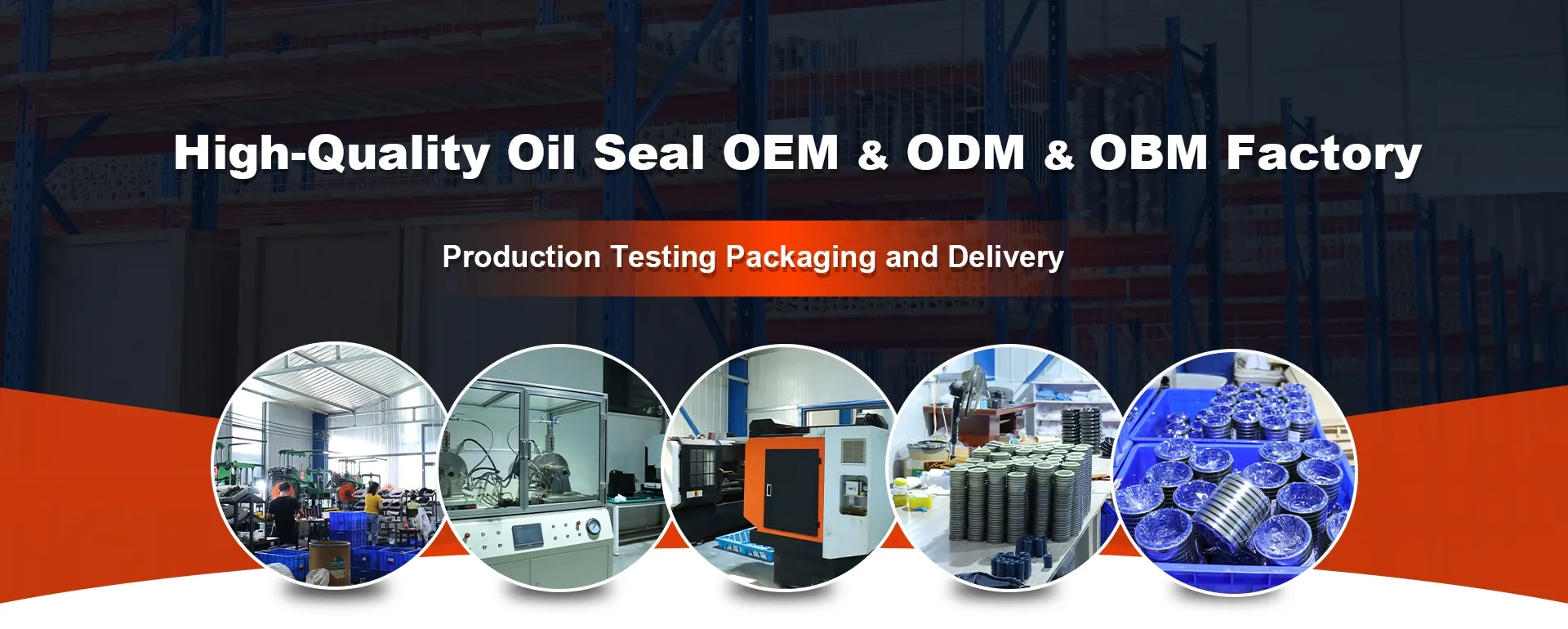ທ.ວ. . 30, 2024 06:48 Back to list
hydraulic oil seal
Understanding Hydraulic Oil Seals Importance, Types, and Maintenance
Hydraulic oil seals are critical components in hydraulic systems, serving the essential purpose of preventing fluid leakage and contamination. These seals are designed to withstand high pressures and dynamic movements, making them indispensable in various applications, from construction machinery and manufacturing equipment to automotive systems and aerospace technology. This article will explore the roles, types, and maintenance of hydraulic oil seals, emphasizing their significance in ensuring the efficiency and longevity of hydraulic systems.
The Role of Hydraulic Oil Seals
Hydraulic systems rely on the effective transfer of oil to transmit power. An oil seal's primary function is to create a barrier that prevents hydraulic fluid from leaking out of the system while keeping contaminants such as dirt and moisture from entering. This is crucial not only for maintaining the system's pressure but also for protecting the integrity of hydraulic components. A compromised seal can lead to fluid loss, reduced efficiency, and ultimately, equipment failure.
Moreover, hydraulic oil seals help maintain the system's overall performance by minimizing friction between moving parts. This enhanced performance translates into smoother operation, better energy efficiency, and prolonged equipment life. Ensuring that hydraulic seals are in good condition is therefore vital for the optimal functioning of any hydraulic system.
Types of Hydraulic Oil Seals
There are several types of hydraulic oil seals, each designed for specific applications and conditions
1. Rotary Seals Also known as shaft seals, these are used in applications where the sealing surface rotates around a stationary shaft. They are commonly found in hydraulic pumps, motors, and rotary actuators.
2. Flat Seals Flat or static seals are used in non-moving parts, providing sealing capabilities in connections where pressure is present. They are often made from materials like rubber or silicone and are critical in preventing leaks in flanged connections.
3. U-cup Seals Shaped like a U, these seals are designed for use in hydraulic cylinders and provide excellent sealing performance. Their design allows them to hold fluid effectively, ensuring minimal leakage under high pressure.
4. O-rings Simple yet effective, O-rings are circular rings that are used in various applications to create a seal between two mating surfaces. They are commonly used where there is a need for a reliable seal against fluid leakage in static and dynamic environments.
hydraulic oil seal

5. V-rings These are lip seals that can dynamically seal against a shaft, providing an effective barrier against contaminants. They are typically used in applications where there is rotation, providing a robust solution for oil retention.
Maintenance and Replacement
Regular maintenance of hydraulic oil seals is essential for system reliability. Here are some key maintenance practices
- Routine inspections Regularly check hydraulic seals for signs of wear, such as cracks, tears, or deformation. Early detection of seal issues can prevent more significant problems.
- Cleaning Keep the sealing surfaces clean. Contaminants can degrade seal performance and lead to premature failure.
- Lubrication Ensure that seals are properly lubricated. Insufficient lubrication can create excessive friction, leading to wear and potential failure.
- Environment control Protect seals from extreme temperatures and harsh chemicals that can degrade materials. Using seals made from appropriate materials for specific environments can enhance longevity.
- Timely replacement Replace seals at the first sign of deterioration or after a specified usage duration defined by the equipment manufacturer.
Conclusion
Hydraulic oil seals are essential for the efficient operation of hydraulic systems, playing a vital role in preventing leaks, protecting components, and ensuring performance. Understanding the types of seals available and implementing proper maintenance practices can significantly enhance the reliability of hydraulic systems. By prioritizing the health of hydraulic oil seals, equipment operators can ensure optimal performance, reduce maintenance costs, and extend the lifespan of their machinery. In the world of hydraulics, a small component like an oil seal can make a monumental difference.
-
The Trans-formative Journey of Wheel Hub Oil Seals
NewsJun.06,2025
-
Graphene-Enhanced Oil Seals: Revolutionizing High-Pressure Oil Sealing
NewsJun.06,2025
-
Future of Hydraulic Sealing: Advanced Intelligent TCN Oil Seals
NewsJun.06,2025
-
Don’t Let a Broken TCV Oil Seal Ruin Your Day
NewsJun.06,2025
-
Bio-Inspired Dust Seals for Better Sealing Performance
NewsJun.06,2025
-
Biodegradable and Sustainable Hydraulic Seal Materials
NewsJun.06,2025
-
Top Oil Seal Solutions for Your Industrial Needs
NewsMay.22,2025
Products categories
















